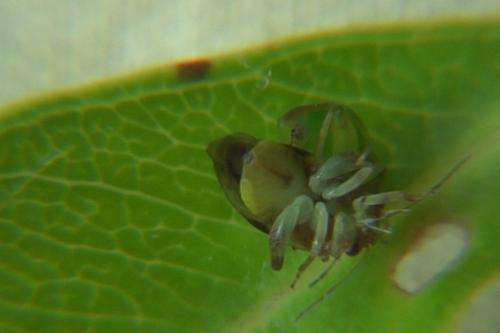Switching sexes and rearranging genitals: Tahitian bugs reveal unusual habits

Researchers from Macquarie University and the University of New South Wales have discovered a strange mechanism whereby two species of traumatically inseminating plant bug are able to live together in Tahiti, as published in a new article in The American Naturalist.
The discovery highlights a very unusual mating system, and an understudied mechanism that the researchers believe may underpin the diversity of life we see today.
"Reproductive interference occurs when closely related species living in close proximity accidentally attempt to mate with one another," explains Nik Tatarnic, who undertook the research through Macquarie University, but is now curator of insects at the Western Australian Museum.
"This can be costly not only in terms of wasted time and energy, but may also lead to damage and even death. These costs may be especially severe for animals with damaging genitalia, such as traumatically inseminating insects."
In these insects, males use hypodermic genitalia to pierce females in the side of the body, bypassing their genitalia and inseminating directly into their abdomen.
Not surprisingly, even between members of the same species traumatic insemination is costly, with females often evolving damage-mitigating "paragenitalia" at the site of insemination. When two such species co-occur however, the consequences can be dire.
To overcome the risks of interbreeding, the behaviour of bugs in this Tahitian environment suggests that both sexes of one species mimic the males of the other, thus flying under the radar and avoiding unwanted interspecies copulations.
Further ensuring their reproductive isolation, both species possess different forms of paragenitalia and are inseminated through different parts of the body. "These results show that sexual selection and interspecies interactions can work together to keep species apart, and may even drive the creation of new species," says Tatarnic.
More information: Tatarnic, N. J. and Cassis, G. 2013. Surviving in sympatry: paragenital divergence and sexual mimicry between a pair of traumatically inseminating plant bugs, American Naturalist. www.jstor.org/stable/info/10.1086/671931
Journal information: American Naturalist
Provided by Macquarie University





















